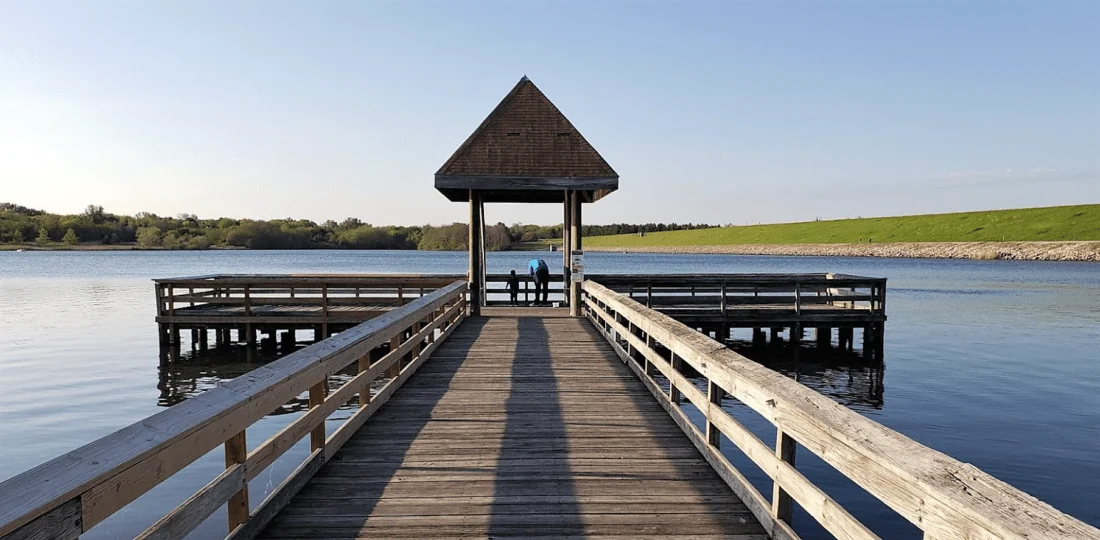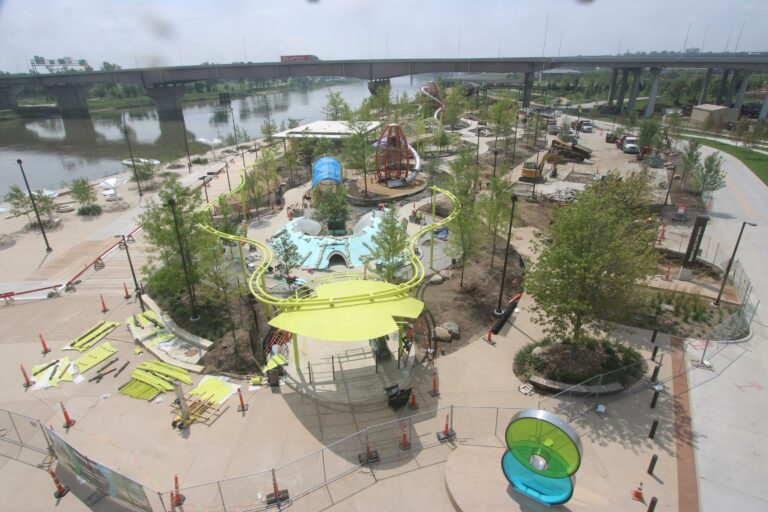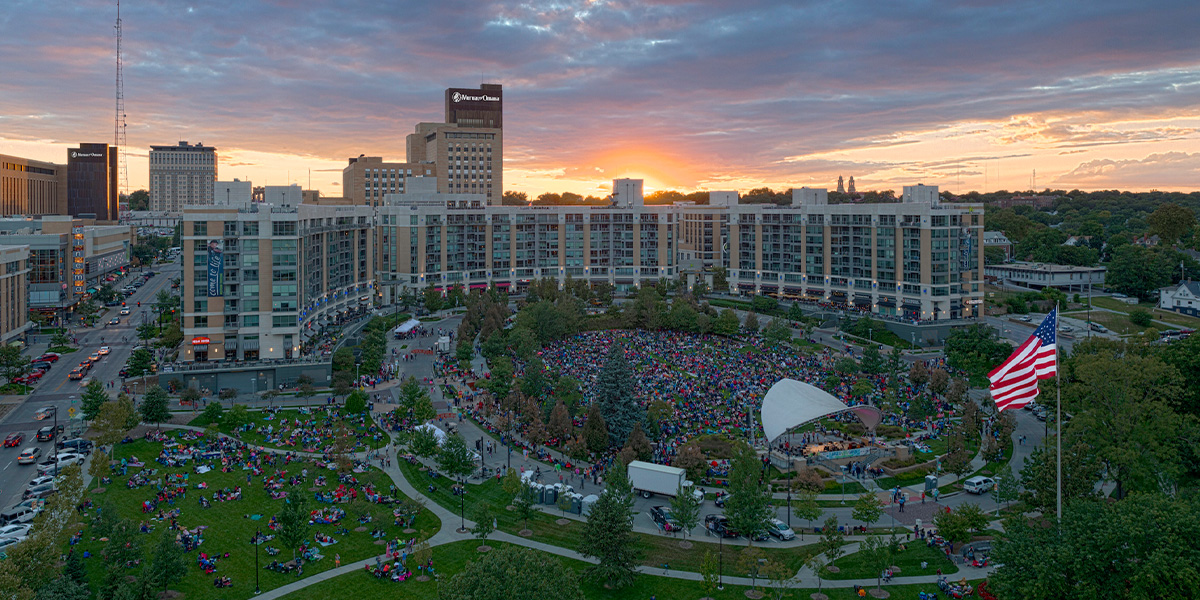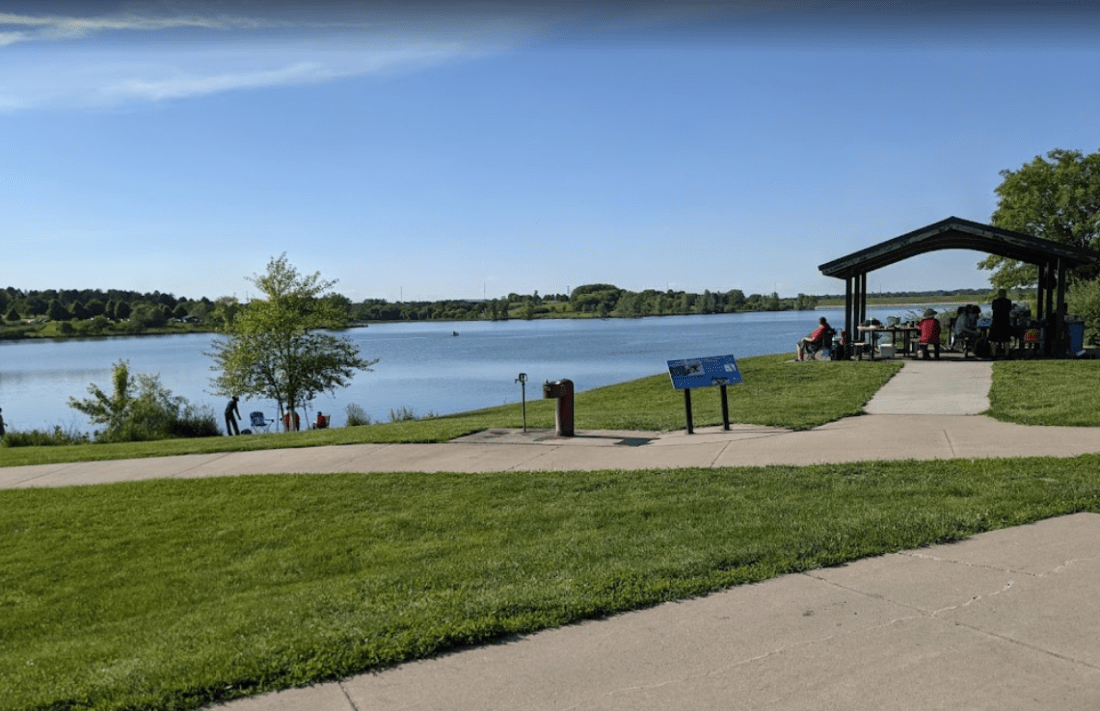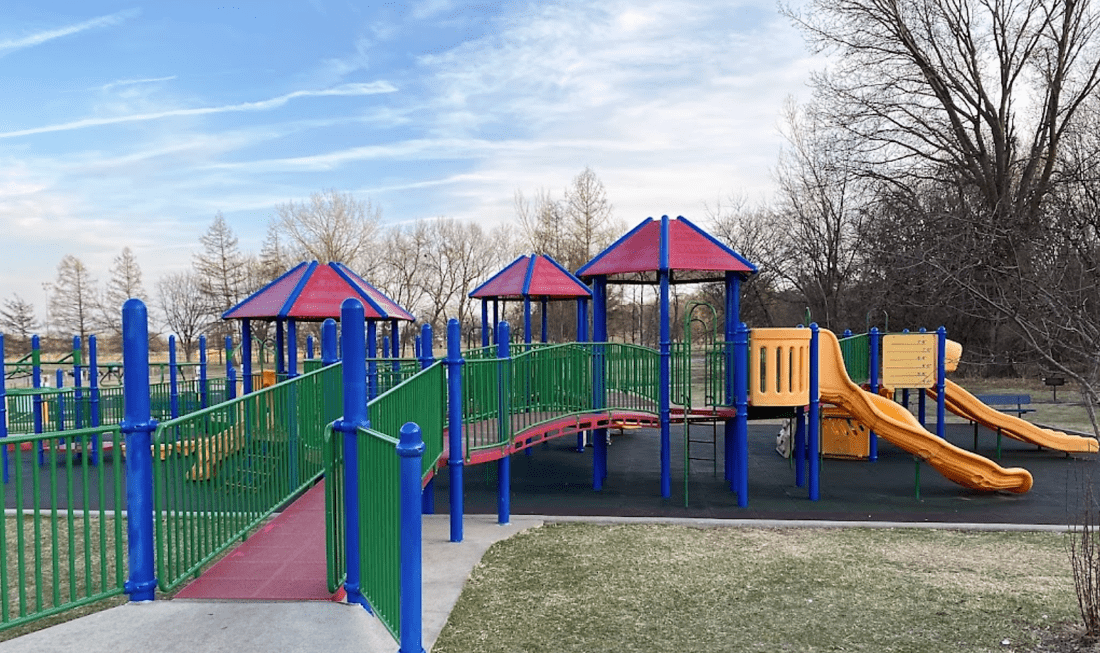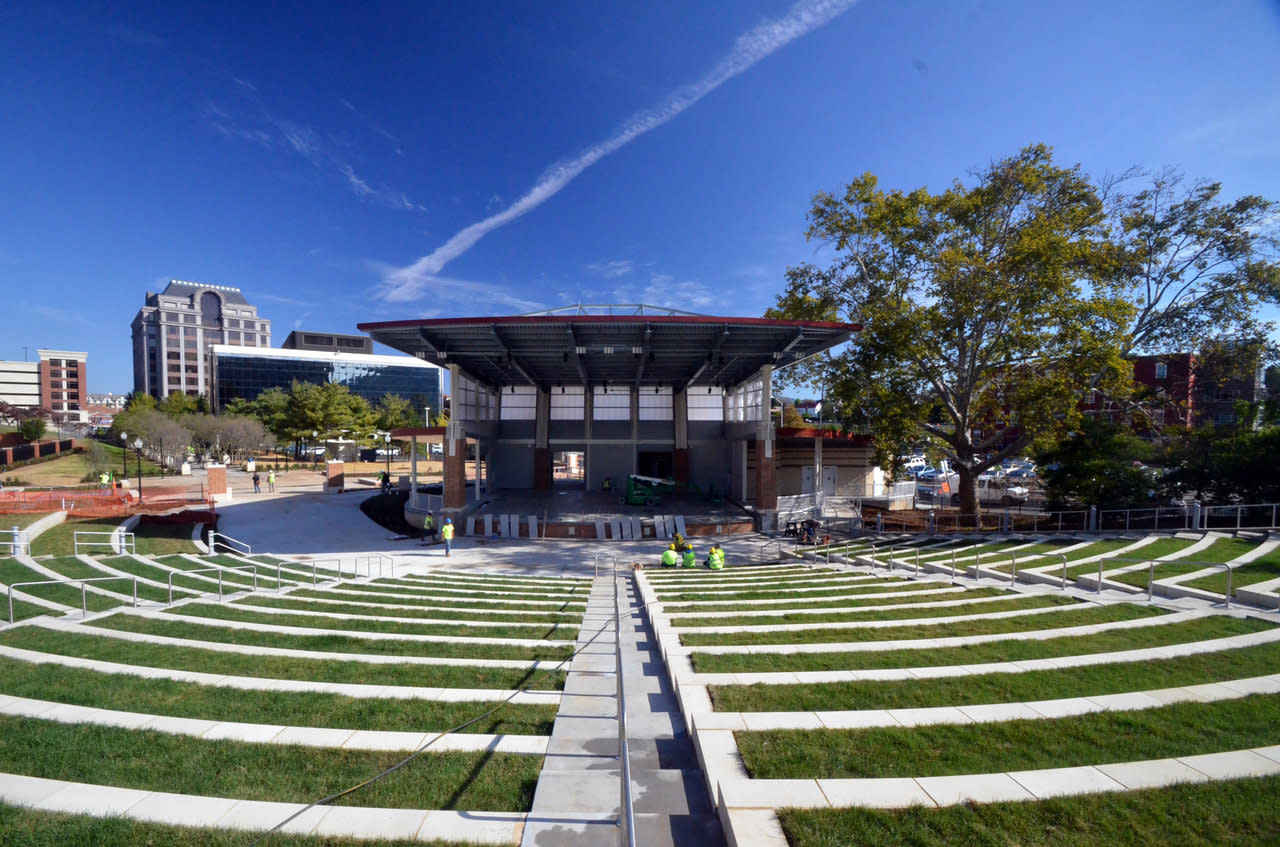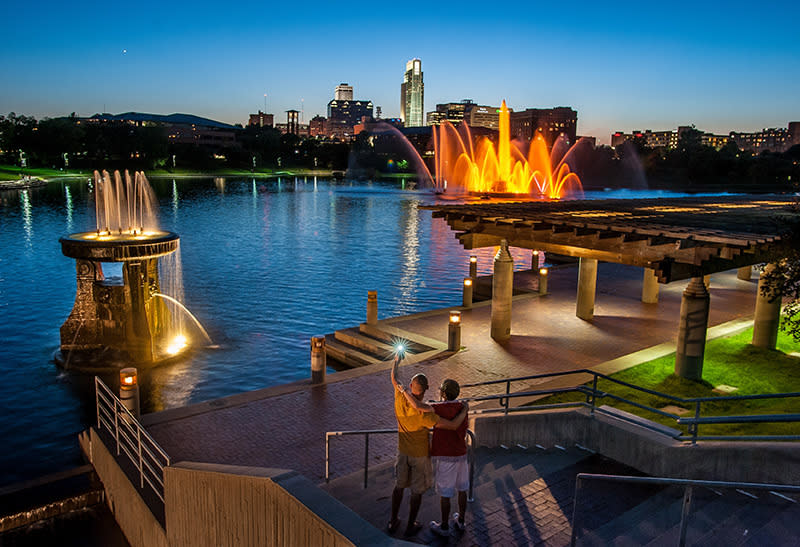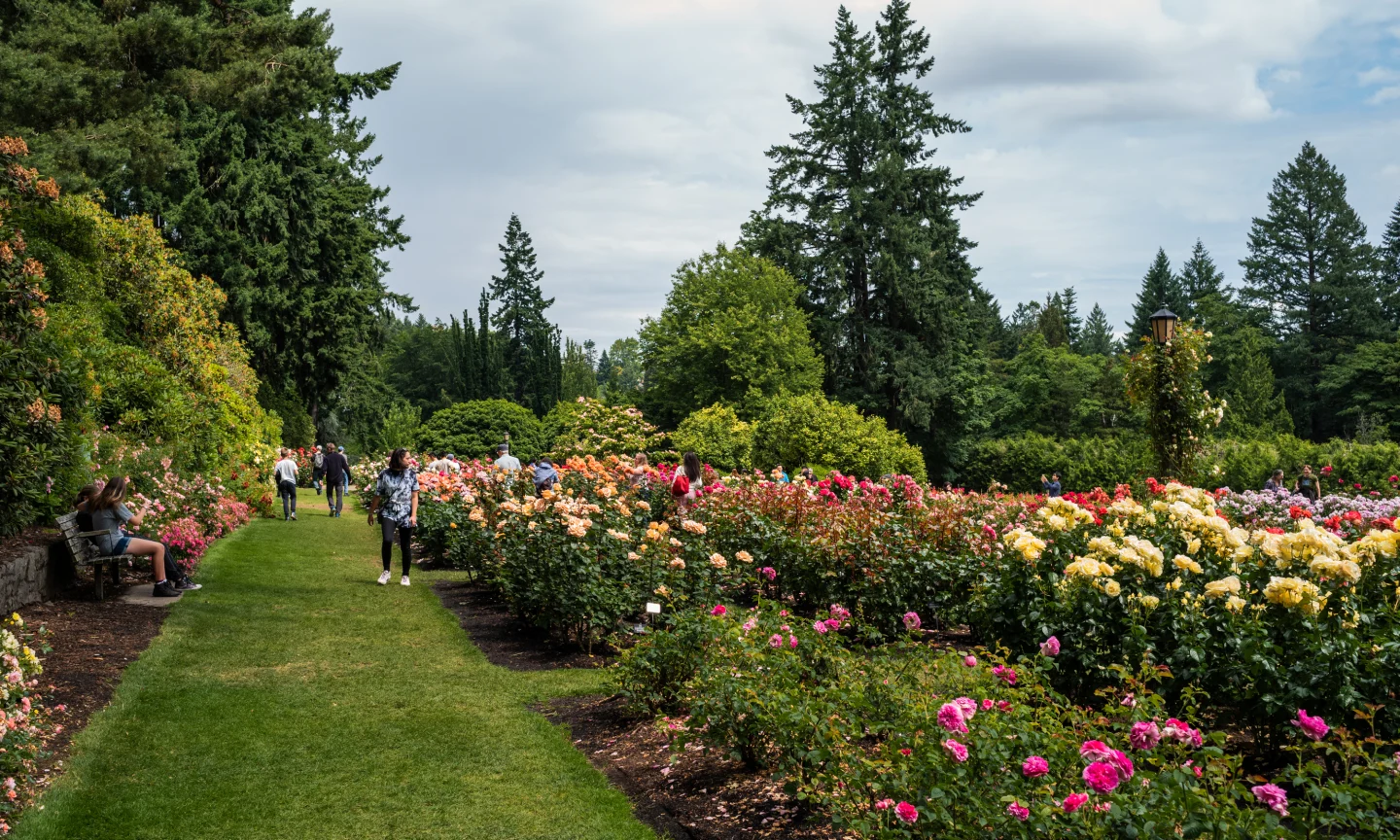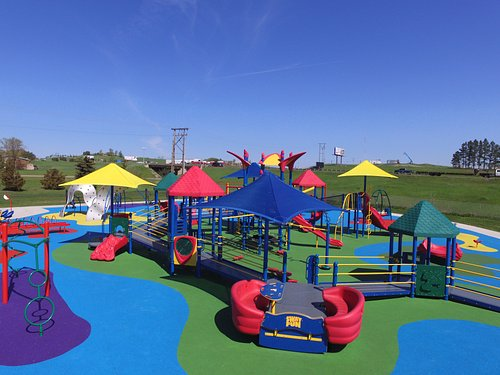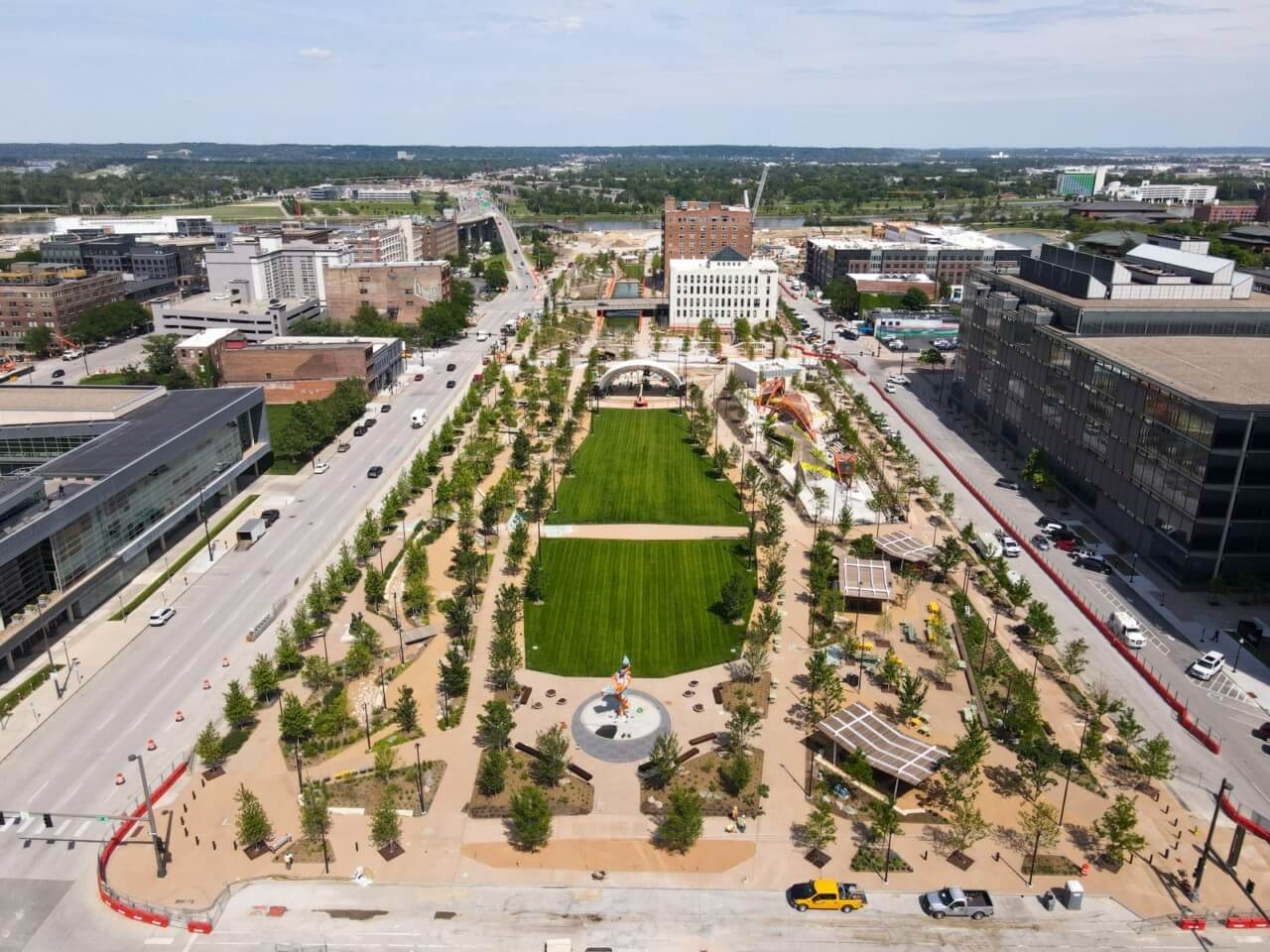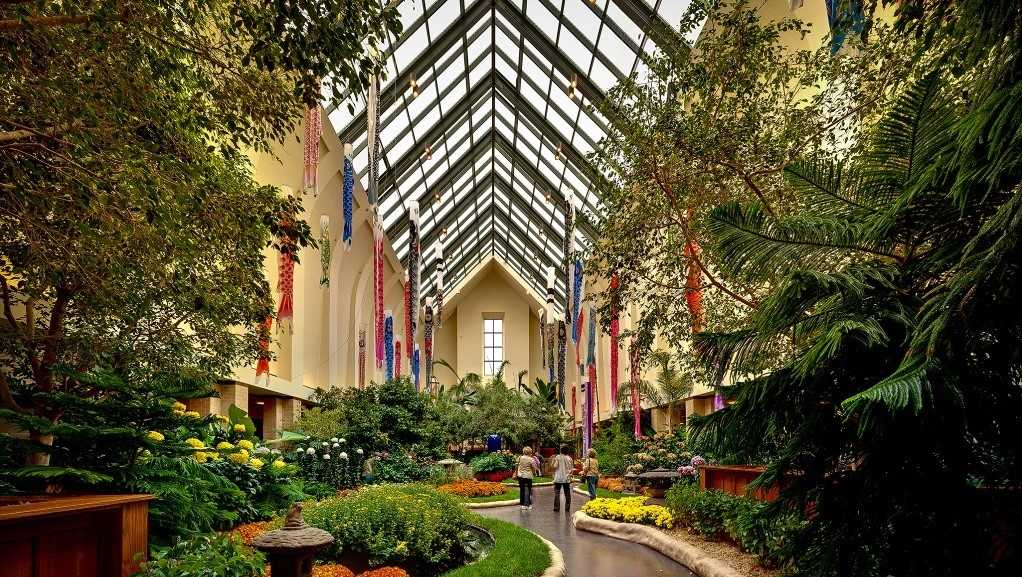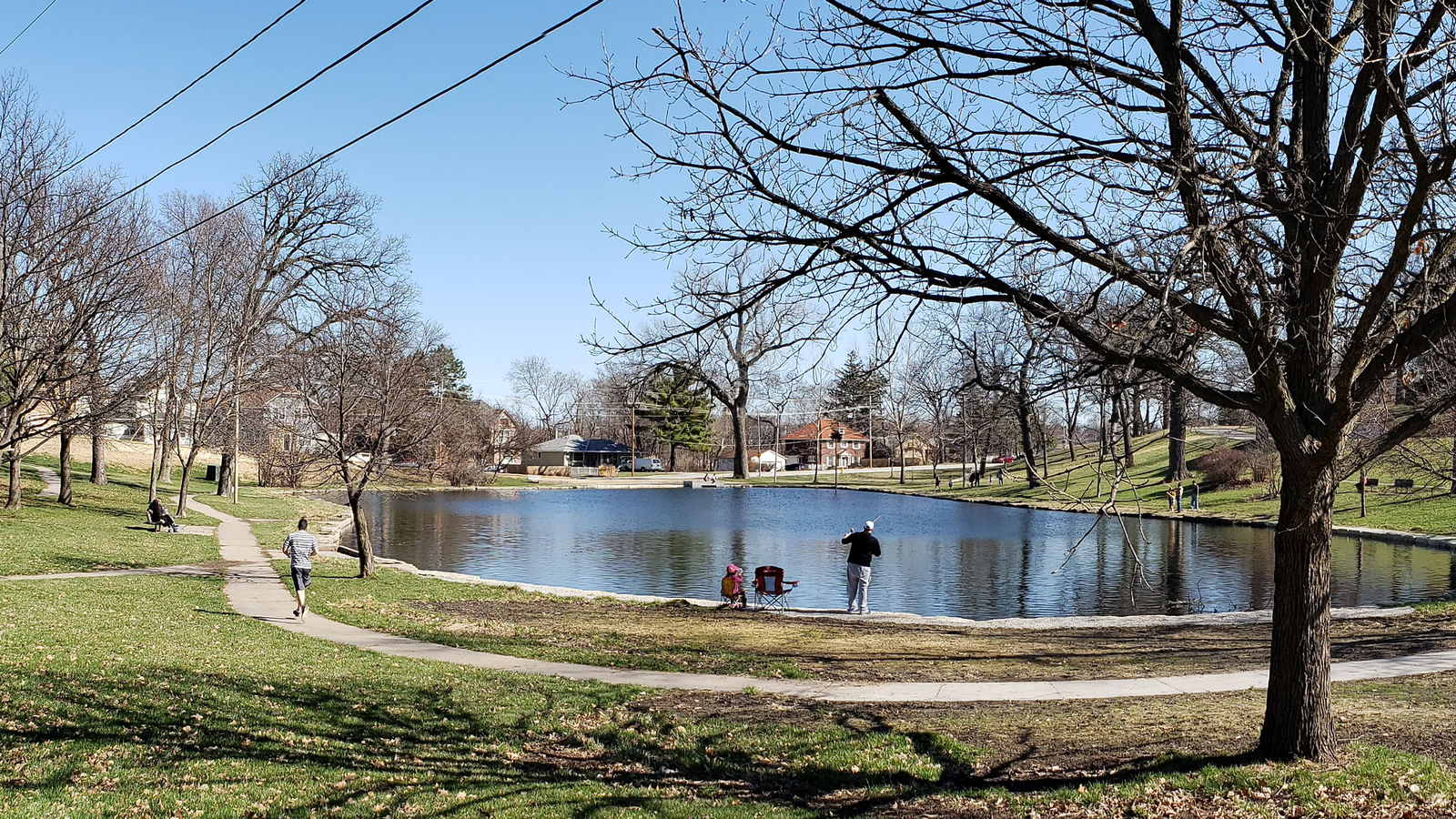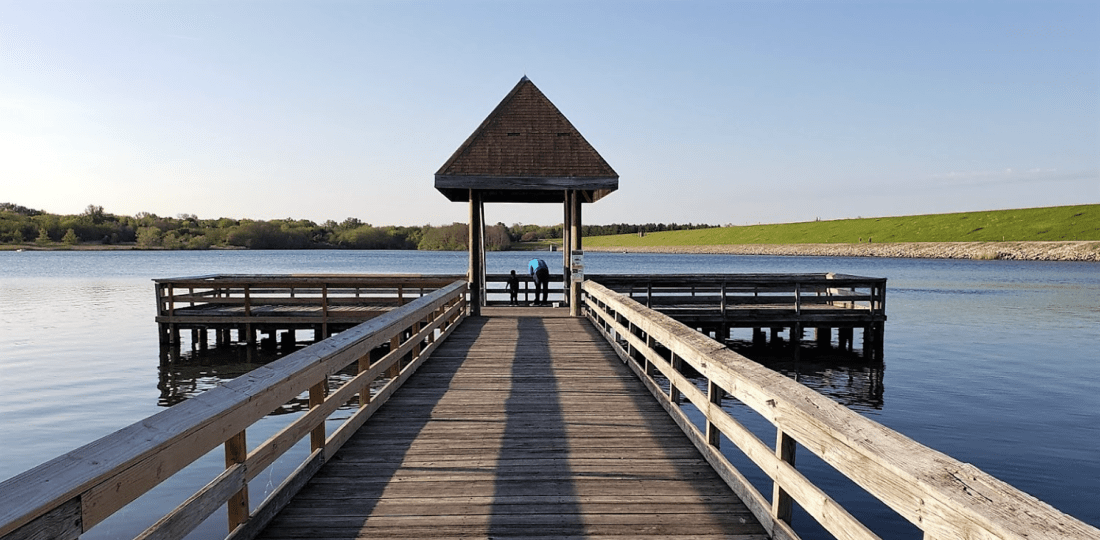Most Amazing 12 Parks in Omaha
Omaha parks offer the ideal locations for play, leisure, or reestablishing a connection with nature without having to drive far, thanks to their riverfront green areas, beautiful gardens, arboretums, and recreation areas. When visiting Omaha, make sure to visit these 12 must-see parks.
Lewis and Clark Landing
Large lawns, meandering walks with informative inscriptions commemorating the renowned explorers’ journey, and serene marina views can be found in Lewis and Clark Landing Park, which is located along the Missouri River just north of downtown. Visitors may travel slowly to or from Iowa to enjoy the scenic shoreline without having to deal with traffic thanks to the pedestrian bridge that spans the Missouri River.
Yoga classes, movie evenings, stand-up paddleboard clinics, and riverfront walks are all held at Lewis and Clark Landing during the summer. During every visit, you can sit and watch life on the marina, pedal the paths that round the park, throw a fishing line into the water, or spread out a blanket on the grassy knolls.
Name and Location: Lewis and Clark Landing is a riverfront park located in downtown Omaha, Nebraska along the Missouri River.
History and Significance: Developed as part of recent riverfront revitalization efforts, Lewis & Clark Landing commemorates the landmark expedition with a public green space for recreation and events. Native landscaping and trails connect visitors to the river.
What to Expect: Riverside walking paths, open lawns, paddling/rowing access. Features memorials to the expedition, informational signage about local tribes and ecology. Site of festivals, charity walks and outdoor fitness events.
Visitor Information: Free access, open daily 6am-11pm. Limited free parking by boat ramp. Paid street parking nearby, TrailLink station accessible. Partly wheelchair/stroller friendly.
Turner Park
The 80-acre historic Turner Park, which is close to downtown, is filled with playground equipment, tennis courts, and baseball diamonds to keep tourists busy. Its central location promotes community events like cultural festivals honoring Omaha’s variety or movie evenings at the park amphitheater under the stars.
The architecturally magnificent Joslyn Castle, however, is the true gem at the center of Turner Park. Explore its elaborately carved teak and mahogany woodwork before taking in the stunning mosaic tile ledges and massive marble fireplaces that exhibit the pinnacle of artisanship. Constructed in 1903, Joslyn Castle is currently a museum that offers tourists a look into Omaha’s history dating back to 1893. Visit Turner Park in Omaha to see regal ruins from the outside or take a free tour of historical motifs inside.
Name and Location: Turner Park is an urban park located midtown in Omaha, Nebraska spanning 39 acres.
History and Significance: Deeded to the city in 1885, Turner Park is one of Omaha’s legacy public parks. Its central location and cultural facilities have made it a popular gathering place for the community for 130 years.
What to Expect: Open green space with rose gardens and floral landscaping. Features a baseball field, tennis courts, walking paths, playground, outdoor performing arts theater hosting events.
Visitor Information: Free access, open daily 9am-11pm. Limited street parking nearby. Main paths paved for accessibility, weekly lawn concerts in summer.
Chalco Hills Recreation Area
Chalco Hills Recreation Area, which borders the eastern bank of the Platte River, provides excellent possibilities for wildlife observation, particularly for uncommon species that migrate above along the Central Flyway. Climb the Rick Lee Observation Tower after hiking the Peter Kiewit Lodge Trail through rolling grassland, wet meadows, and woody cottonwood forest, where you may see hawks and herons floating through the wetlands.
Chalco Hills offers visitors the fortunate opportunity to see the magnificent migration of half a million Sandhill Cranes from March to April. During their remarkable annual journeys, their enormous flocks rest and dine in the nearby wetlands and meadows. While enjoying the lush surroundings at Chalco Hills Recreation Area, keep your eyes out to the skies in the hopes of catching a sight of these majestic birds in flight.
Name and Location: Chalco Hills Recreation Area is a public park located southwest of Omaha, Nebraska near the Platte River.
History and Significance: Originally opened in the 1980s, Chalco Hills offers diverse recreation options conveniently close to Omaha. Birdwatching has become popular due to wetlands/grassland habitat attracting many migratory species.
What to Expect: Miles of trails for hiking, biking and horseback riding through prairie and wooded areas. Two fishing ponds, archery range, disc golf course. Prime location for spotting native birds along the Loop Trail system.
Visitor Information: Park open daily from 5am-11pm. $7/vehicle entry permit required, sold onsite. No hiking trails open after dark. Pets allowed on leashes, bikes permitted on trails.
Seymour Smith Park
Seymour Smith Park, a 100-acre rural natural retreat in southwest Omaha, captivates tourists. From April through October, gravel hiking and bike trails meander through prairie, forests, and wet meadows that are a riot of color thanks to native wildflowers. The park’s varied terrain and isolation provide the perfect cover and food for a wide variety of indigenous species.
To see or photograph bald eagles fishing on the marsh, hummingbirds and indigo buntings fluttering wildflowers, and the enormous fourteen-point white-tailed deer that the park’s locals have named Walter, bring binoculars and a camera. Constructed on top of a disused landfill from the middle of the 20th century, Seymour Smith Park quietly provided everyone with immersive natural experiences by transforming an empty area into a paradise.
Therefore, this list highlights top green areas across Omaha that offer something for everyone to enjoy, whether they are looking for physical recreation through sports, an appreciation of public art and culture through events, or just some outdoor peace and quiet surrounded by nature.
Name and Location: Seymour Smith Park is an extensive public park located in south Omaha spanning 350 acres.
History and Significance: Created from a former landfill site, Seymour Smith Park opened in 1999 as one of Omaha’s largest park projects. Designed as a nature recreation space with restored prairie and wetlands. Connected to Keystone Trail system.
What to Expect: Rolling hills, woodlands, meadow trails for hiking/biking with Missouri River valley overlooks. Observation tower, archery range, fishing lagoons, butterfly garden, model airplane airfield.
Visitor Information: Free access, open daily 5am-11pm. Ample free parking. Restrooms and visitor center onsite. Leashed pets permitted, wheelchairs limited to hard surfaced paths.
Elmwood Park
Elmwood Park is a 60-acre urban green area and leisure center located in the heart of Omaha. While youngsters burn off energy in the playground and splash pad area, tennis courts, basketball courts, baseball diamonds, and an archery range provide active enjoyment.
However, Elmwood also offers ideal settings for yoga on the Great Lawn, stargazing movie evenings in the park’s amphitheater, or taking a leisurely walk along the loop route that circles its three ponds. Horticultural splendor is displayed across the grounds with specialty gardens such as the lily pond, iris garden, and rose garden. Elmwood Park is open all year round to guests of all ages and interests, offering both exciting activities and serene natural havens.
Name and Location: Elmwood Park is a large public park located in central Omaha, Nebraska spanning 60 acres.
History and Significance: Originally purchased in 1885, the park is Omaha’s oldest municipal park. It has remained a popular spot for recreation, picnics, and community events for over 100 years. The park has gardens, ball fields, picnic space, and a pavilion.
What to Expect: Outdoor and garden areas for picnicking, walking, festivals, and playing. Sports facilities include tennis/basketball courts, baseball diamonds, and a playground. The pavilion can be rented for gatherings. Seasonal concessions available.
Visitor Information: Free admission. Open daily from 6am to 11pm. Pet friendly. Limited onsite parking, additional nearby street parking. Restrooms, walking paths, open green space.
Heartland of America Park
Name and Location: Heartland of America Park is an urban park located in downtown Omaha, Nebraska along the Missouri River.
History and Significance: Developed as part of recent Omaha riverfront renewal efforts, Heartland of America Park opened in 2006 reclaiming industrial land for public recreation. Part of Lewis & Clark National Historic Trail.
What to Expect: Attractions include fountains, waterfalls, walking paths, pedestrian bridge over railroad tracks giving scenic river views. Also features memorials for pioneer history and bison/wildlife conservation efforts.
Visitor Information: Free access, open daily. Limited free parking, additional paid street parking nearby. Main paths are wheelchair/stroller friendly. Pets allowed on leashes.
From Heartland of America Park, you may enjoy some artistic flair in addition to breathtaking views of Omaha’s growing downtown skyline. Throughout the 18-acre area, whimsical sculptures like Guardian Spirits and The Thread foster hope and a sense of community. Every week from April to October, Heartland conducts farmers markets that feature handmade goods and hyperlocal cuisine.
Additionally, Omaha residents congregate for special occasions such as summer concert series, cultural festivals, and fitness charity walk/runs. Heartland of America Park offers breathtaking vistas and activities without the high cost of entry, whether you’re just passing by to take a picture of the city center or attending a vibrant community event.
Washington Park
Since 1887, South Omaha has been bordered by Historic Washington Park, a handy green area where local communities have come together to foster camaraderie. Baseball and soccer fields provide local sports teams with a place to play, and lawns shaded by trees can host both small and big gatherings.
While courts hold basketball, tennis, and volleyball matches, two playground areas excite children with large and little equipment. Away from the bustle of busy regions, the park’s serene Lagoon provides a peaceful setting for enjoying a packed lunch. Washington Park unites South Omaha throughout the year with easily accessible public events that create enduring community ties, such as outdoor films, charity walks, and cultural festivals.
Name and Location: Washington Park is a public park located in North Omaha spanning over 20 acres.
History and Significance: Opened in 1892, Washington Park was part of Omaha’s original parks and boulevard system. Home to historic monuments and recreation facilities, the park has been a communal green space for Omaha’s north side for 130 years.
What to Expect: Open green space, sculptures, walking paths. Features a recreation center, community gardens, swimming pool, playground, basketball and tennis courts. Concerts and events in summer.
Visitor Information: Free admission. Park open daily 9am-11pm, rec center hours vary. Limited free parking around perimeter. Most areas accessible and kid/pet friendly.
Mandan Park
With hiking and bike trails that wind through woodlands and serene plains, Mandan Park, which is tucked away behind the Missouri River and less than ten minutes’ drive from downtown, offers a convenient natural retreat. While anglers try their luck fishing the Missouri shoreline, outdoor enthusiasts walk the trails and see birds and native wildflowers in season.
You can also access the vast regional trails that wind through woodlands, tallgrass prairies, and wetland areas that support abundant biodiversity by visiting Weaver’s Cove and Butterfly Hill Trailhead, both of which are situated in Mandan Park. Mandan Park’s solitude and preserved areas make it seem worlds away from the bustle of the city, yet it’s still accessible enough for tourists to quickly escape and re-establish a connection with the wild Midwest.
Name and Location: Mandan Park is a riverside public park located in North Omaha, Nebraska along the Missouri River.
History and Significance: Originally part of the grounds belonging to the historic Mandan Apartments, Mandan Park opened in 1989 with landscaping, trails and river access commemorating the tribes and explorers associated with the area.
What to Expect: Open green space, flower gardens, scenic trails along Missouri River bluffs with views and plaques describing history. Peaceful spot for walking, fishing and picnics. Features Native American styled memorial gates.
Visitor Information: Free access, open daily until 11pm. Limited street parking available. Mostly grass/dirt trails, partly wheelchair accessible to lodge/shelters.
Gene Leahy Mall
Nearly nine acres of urban park area are available for strolling, people watching, and taking in community events at the Gene Leahy pedestrian mall, which is conveniently located downtown along the Missouri River. It’s a great spot to unwind while touring Omaha because of its central location, close proximity to hotels and downtown establishments, shaded trees, and lots of seats.
While winter offers seasonal markets and ice skating on the nearby rink at Gene Leahy Mall, warm weather brings free live music, yoga sessions, art and cultural exhibits, and food trucks to the area. Visitors who stop by just to relax in an urban oasis are delighted throughout the year by the tranquil flow of the Missouri River, splashing fountains, and lush foliage.
Name and Location: Gene Leahy Mall is a downtown public park located in Omaha, Nebraska spanning nine city blocks.
History and Significance: Originally built in the 1960s, Gene Leahy Mall has been renovated into a modern civic space with gardens, event areas, and underground green design features. Hosts many community cultural events year round.
What to Expect: Tree-lined pedestrian walkways, fountains, lawns, flower gardens. Year round events like festivals, music, holiday celebrations centered around space. Winter ice-skating rink. Public art installations.
Visitor Information: Free access, open daily. Limited metered parking along park roads, parking garages nearby. Easily walkable from Old Market district. Mostly wheelchair friendly.
Lauritzen Gardens
Lauritzen Gardens, which spans 100 acres close to Omaha’s riverside, offers a variety of botanical retreats that are all connected by walking trails that meander through arboretums, specialty gardens, and sweeping lawns. While the Spring Woodland Walk dazzles with wildflowers and flowering bulbs, the Victorian Gardens and Herb Garden create elaborate floral arrangements with vibrant perennials and textured shrubs.
Within the tropical Marjorie K. Daugherty Palm Conservatory, koi ponds and water features coexist with lush palms, fragrant vines, cacao trees, and colorful orchids. Wander along winding paths that are perfect for recharging your senses away from the stimulus of the city, or pause and breathe in the aroma of colorful roses. Visit Lauritzen Gardens for free to see the arcing trellises, varied textures, and vibrant colors that showcase horticultural craftsmanship over 100 acres.
Name and Location: Lauritzen Gardens is a botanical garden located in Omaha, Nebraska.
History and Significance: Originally the family estate of Omaha business leader Charles Lauritzen, the gardens opened to the public as a nonprofit botanical center in 1995. It features 100 acres of botanical displays across 20 unique garden areas.
What to Expect: Visitors can explore a variety of themed gardens like the Victorian garden, herb garden, and arboretum. Seasonal floral displays, model railways, and children’s activities. The Marjorie K. Daugherty Conservatory is a must-see.
Visitor Information: Open daily from 9am-5pm. Admission is $10 for adults, $5 for kids over 4 years old. Onsite parking available. Tram tours and facility rentals offered.
Hanscom Park
Near downtown Omaha, Hanscom Park offers local children areas to play on vibrant equipment while families spread out blankets for picnics amidst the lush surroundings. Tennis courts, basketball hoops, and a loop walking route complete the recreational options for remaining active, and baseball diamonds serve as venues for informal activities.
Check out the Top 12 Romantic Activities in Chicago as well.
While stone bridges provide a charming atmosphere across the park’s creek and pond, iconic gazebos provide shade on sunny days and cover during spring showers. As fireworks blaze brightly in the night sky over Hanscom Park, locals swarm here to celebrate the Fourth of July. Despite its central location, Hanscom Park is peaceful and one of Omaha’s oldest parks, where families still gather to create memories more than a century later.
Name and Location: Hanscom Park is a public park in midtown Omaha spanning 75 acres.
History and Significance: One of Omaha’s early parks when purchased in 1872, Hanscom Park is listed on the National Register of Historic Places. Notable for its prairie landscaping, Peace Pole, and role in Ak-Sar-Ben festivities historically.
What to Expect: Open green space, historic monuments, flower gardens, paved walking paths. Features tennis courts, playground, basketball court, diamond sports fields. Popular dog park location.
Visitor Information: Free access, open daily 6am-11pm. Some free parking available within park grounds. Partly handicap accessible, mostly paved main paths.
Zorinsky Lake Park
Zorinsky Lake Park is entirely man-made, although it bears the name of former Omaha Mayor Albert Zorinsky, whose environmental conservation efforts turned once-natural wetlands into the park system’s crown gem. Today, its glistening 255-acre focal point welcomes swimmers, stand-up paddlers, and leisurely boaters to its waters during the summer.
The lake’s perimeter is encircled by more than 15 miles of multipurpose paths that follow the west Papillion Creek watershed that supplies the basin while winding through prairie meadows that are periodically adorned with wildflowers. Zorinsky Lake Park offers a beautiful outdoor leisure area for enjoying the riparian and prairie landscapes that are endemic to Nebraska, whether you choose to hike, bike, or take your dog around the stunning reservoir.
Name and Location: Zorinsky Lake Park encompasses over 770 acres in western Omaha.
History and Significance: Created from a former gravel pit mine, Zorinsky Lake Park opened to the public in 1989 as one of Omaha’s premiere recreation parks with a central man-made lake. Hosts family events and races year-round.
What to Expect: Prominent lake for boating, swimming, fishing. Surrounding trails for hiking, biking, running and skating. Wildlife viewing, sporting facilities, playground, picnic shelters, food vendors.
Visitor Information: Park open daily 5am-11pm. $7/car entry fee applies. Main trails paved for accessibility. Pets permitted on leashes, ample parking.
